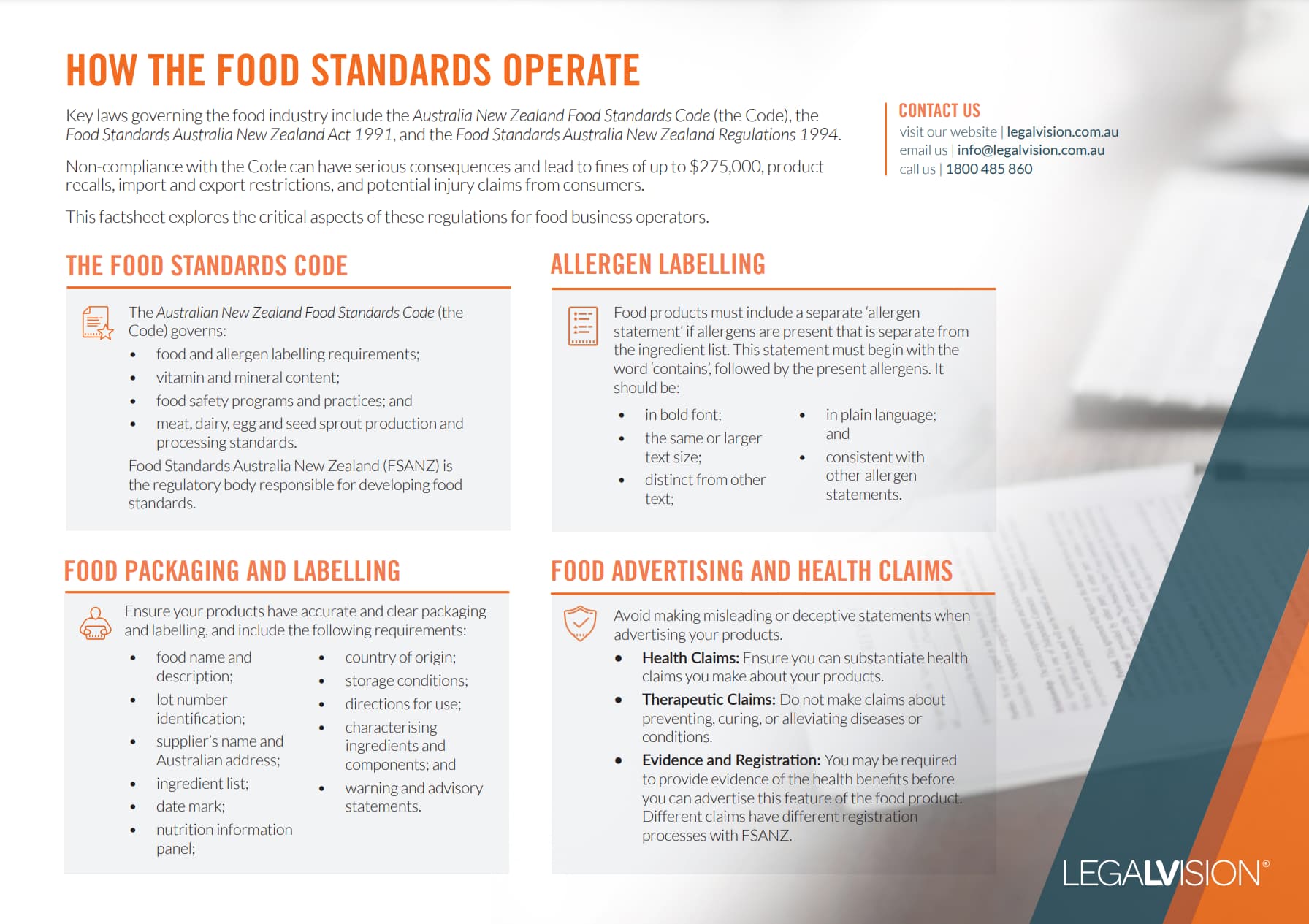Table of Contents
- 1. What is a Safety Defect?
- 2. Am I Liable for Safety Defects?
- 3. What Do I Do if I Suspect a Safety Defect in a Product I Sell?
- 4. What Does Compensation Mean?
- 5. What Can Consumers Do if They Suffer Loss and Damage From a Safety Defect?
- 6. What Safety Defect Claims Does the ACL Not Cover?
- 7. What if You’re Not Liable?
- 8. Do Consumers Have a Time Limit to Make a Claim?
- Key Takeaways
If you are a business owner who plans to produce or sell goods, it is important to understand the extent to which you are liable for the safety and quality of the goods. The Australian Consumer Law (ACL) protects consumers if they experience damage or loss because your goods are of poor quality. This article will answer some common questions about safety defects and how you can protect your business from any consumer claims.
1. What is a Safety Defect?
A product has a safety defect if it does not meet the level of safety the public is generally entitled to expect. In addition to your good’s quality, determining a safety defect also involves looking at how you represent your good. For example, the good’s description needs to match the use of the good.
Whether or not a good has not met the relevant safety level is an ultimately legal question determined by the court. The court will take into account various factors when determining whether your product has a safety defect, including:
- your use of marketing and why your product was marketed;
- details about your product’s packaging;
- your trade marks associated with your product;
- instructions and warnings for assembly and use;
- a reasonably expected safety level with the product; and
- the date or period when the product was distributed or made available to consumers.
Some examples of safety defects include:
- defective parts in vehicles, including faulty brakes, airbags, tired or malfunctioning ignition switches;
- defective electrical wiring in appliances; or
- structural weaknesses in furniture.
2. Am I Liable for Safety Defects?
Although you may be a business owner who sells the product rather than its actual creator, you may still be liable for safety defects. A traditional understanding of a manufacturer includes a business that creates or assembles a product. The ACL, however, expands this definition to cover retailers and businesses who import the product if the manufacturer has no office in Australia. Other businesses that may be held liable include those who use their own brand name in relation to the sale of the product. For example, if another business manufactures jewellery in Indonesia and you sell it in Australia under your own brand, you may still be considered a manufacturer.
Continue reading this article below the form3. What Do I Do if I Suspect a Safety Defect in a Product I Sell?
If you suspect there is a safety defect in a product you own and sell, you must contact the manufacturer or retailer immediately for further instructions. Possible courses of action when this suspicion raises may be recalling the product or reporting serious consumer harm related to it. These are explained in more detail below.
Recalling Products
You may need to recall a product you have sold or are selling if you suspect that it does not comply with a mandatory standard or product ban. You must notify the Australian Competition & Consumer Commission (ACCC) within two days of taking a recall action.
Reporting a Serious Injury, Illness or Death Associated With a Product
Your business may have sold or helped to supply a product that is a serious risk to human health. This could involve it being associated with a serious injury, illness or death. If this is the case, you must report it within two days to the ACCC. You will not be admitting your liability if you report such harm, and it is your responsibility to do so, as these reports are mandatory.
However, if you do not submit a mandatory report when you should, you may be found guilty of a criminal offence or be fined. The reporting is mandatory for anyone aware of the incident who is also involved in the supply of consumer goods and product-related services. This can involve:
- retailers;
- other sellers;
- suppliers;
- wholesalers;
- distributors;
- importers;
- manufacturers;
- installers; and
- repairers.
4. What Does Compensation Mean?
Under the ACL, a consumer can seek compensation if you have supplied a product with safety defects that caused them loss or damage. This does not necessarily have to be physical injuries or harm. Instead, loss or damage also includes financial losses or destruction of another good, land or building stemming from the unsafe product.
For example, imagine your customer bought a defective lawn mower from you. If the mower subsequently causes damage to their property, they could assess the financial loss and claim this back to you.
5. What Can Consumers Do if They Suffer Loss and Damage From a Safety Defect?
If your customers have suffered a loss or damage because of safety defects in manufacturer’s goods, they could:
- take the manufacturer (which may be you, depending on the situation) to court; or
- complain to a consumer protection agency, who may consider if there is a significant public value in bringing representative legal action against you on the customer’s behalf.
6. What Safety Defect Claims Does the ACL Not Cover?
For some claims against safety defects, consumers cannot rely on the ACL. The ACL does not cover claims relating to:
- damage to commercial property;
- loss arising from a business relationship, such as loss of profit;
- losses for claims made for workers’ compensation; and
- losses regulated by international agreements.
7. What if You’re Not Liable?
There are defences from legislation and laws to assist you if you are facing a claim for safety defects. One of these relates to the defect not being present at the time of supply. Furthermore, if you are a business only providing a part of a final good, it is most likely that the business assembling all the parts would be considered liable. A safety defect may also not be yet known due to the current scientific or technical knowledge.
Nonetheless, prevention and strict safety standards is the most effective way of minimising your liability. You should, in your business activities, implement a detailed compliance and monitoring system to ensure that all products do not contain serious safety hazards.
8. Do Consumers Have a Time Limit to Make a Claim?
Consumers have a three-year window from the point they become aware, or should have reasonably become aware, of three key factors necessary to initiate legal action. The factors they should know in this reasonable time period are the relevant:
- loss;
- safety defect; and
- manufacturer’s identity.
Additionally, any legal action must commence within a maximum of ten years from the time you provided the goods with the alleged safety defects.

This factsheet explores the critical aspects of these regulations for food business operators.
Key Takeaways
As a business owner, you must avoid supplying unsafe or hazardous products and prevent health risks associated with your products. Under the Australian Consumer Law, you may be considered a manufacturer and, thus, are obliged to address safety defects promptly. Taking action may involve recalls, mandatory reporting of harm or providing replacements or repairs. Low levels of care towards safety standards can lead to several potential risks, including legal action against you. As a result, it is recommended you take steps to ensure prevention measures are taken to minimise risks.
If you would like assistance regarding safety defects in goods, contact our experienced competition lawyers as part of our LegalVision membership. For a low monthly fee, you will have unlimited access to lawyers to answer your questions and draft and review your documents. Call us today on 1300 544 755 or visit our membership page.
We appreciate your feedback – your submission has been successfully received.











